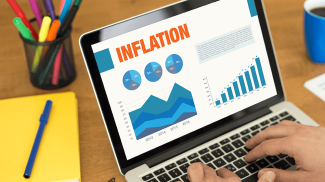It’s been over a decade since the last financial crisis, and many people are wondering if we’re headed for another one in 2022. The signs seem to be pointing in that direction with many experts agreeing the markets and US economy will get much worse before they get better. In this post, we’ll take a closer look at what’s going on and explore whether or not a recession is imminent.
Is a Recession Coming in 2022?
It’s been a while since the world has faced a recession. Recessions are when there’s negative growth in the economy for two consecutive quarters. However, according to the World Bank, one may be coming in 2022. The organization warned that most countries are headed for a recession, with a possible return to stagflation. Something we haven’t seen since the 1970s.
READ MORE: 19 Recession Proof Businesses
Are We Going into a Recession? Stats Making Analysts Worry
Most economists are worried that the U.S. may be heading for a recession. Here are five stats that show the US might be headed there in 2022:
Flattening Yield Curve
This first warning sign is an economic indicator that has been historically reliable in predicting recessions. When it becomes inverted, it’s a signal that the market is anticipating a decrease in the economy’s growth and a recession will likely happen within 6 to 18 months. At present, portions of the yield curve are starting to invert.
Consumer Spending
Current inflation rates have put a dent in purchasing power among consumers. This has led to Americans spending less on discretionary items. This poses a risk for consumer spending as a whole.
Economic Growth Slowing
Since the first quarter of this year, it has been reported that economic growth in the U.S. is slowing down. This is according to the Bureau of Labor Statistics (BLS), which recently released data that showed that the GDP unexpectedly shrank by 1.5%. This is the worst performance since 2020 during the COVID pandemic.
Prices Climbing
Prices increased 8.6% on the year through May causing inflation to go higher than the 8.3% inflation expectations. This high inflation makes it increasingly difficult for consumers to afford everyday purchases.
The overall trend is clearly upward, with prices climbing 1% from April alone. This is a worrying sign for economic activity and could lead to decreased spending by consumers in the future unless the Government can bring inflation down.
Energy Inflation
In the United States, energy inflation accelerated to 34.6% in May of 2022. This is the most since 2005. Fuel oil is up 106.7%, which is the largest increase ever recorded. Gasoline is up 48.7%, natural gas is up 30.2%, and electricity is up 12%, which is the largest yearly increase since August 2006.
Is Recession Coming? Stats Against
Some analysts seem to think recession risks are low and we’re unlikely to experience one in 2022. Here are four stats that back this up:
Low Unemployment
The U.S. BLS recently released a report that states the unemployment rate is at 3.6%. This low number indicates that there are more job opportunities than there are unemployed people, which is a good sign for the economy.
Wage Growth
The stats show that wage growth is still on the rise, with a 5.2 percent increase over the past twelve months. This indicates that there is still room for wages to grow, which is good news for workers. The data also shows that private-sector production and nonsupervisory employees saw a 0.6 percent increase in their hourly earnings in May, which is also a positive sign.
Fed Raising Interest Rates
The Federal Reserve is raising rates of interest to combat inflationary pressures and cool consumer demand without triggering a recession. They raised rates by 50 bps (basis points) in May 2022. The aggressive move to raise rates by Fed policymakers is likely to continue in the near future as policymakers attempt to fight inflation while avoiding a recession.
Housing Market is Booming
The housing market has been booming over the last year. Single-family homes had the largest annual gain in values and rentals, the highest amount of home sales in 15 years, and historically low foreclosure rates. The market is in far better shape today than it was a decade ago with homes currently selling for much higher prices.
Domestic Demand Grew
Despite supply-side headwinds, domestic demand grew at a healthy 2.5% annualized. This indicates the economy is still on track and doing well even with the supply chain issues the US has faced. If we were headed for a recession, this number would be much lower.
Recession Warning Signs
There were many warning signs that led up to the great recession in 2008. Here are the five main ones to look out for in 2022:
Negative Economic Growth
Negative GDP growth is a recessionary indicator of economic decline and the most obvious sign that a recession may be coming. Pay attention to gross domestic product reports to get an idea of whether the economy is contracting or expanding.
Central Bank Tightens Policy
When the central bank starts to raise interest, it’s usually a sign that they are worried about inflation and are trying to slow down the economy.
Economic Downturn in Investments
When the Federal Reserve decides to raise interest rates, it’s usually a sign that they’re worried about inflation and are trying to slow down the economy. Rising interest rates increase borrowing costs making investing in high-risk ventures less attractive. This can lead to a decrease in investments.
High Unemployment Rate
A high unemployment rate is a lagging indicator, which means it generally comes after the economy has already begun to weaken. A sustained increase in the unemployment rate can be a sign that a recession is on the way.
Declining Housing Prices
If housing prices start to decline, it’s a sign that people are struggling to afford homes and that the economy may be slowing down.
The 2008 Recession
In 2008, the U.S. economy suffered from a severe recession. Though it officially began in December 2007, there were warning signs that appeared in the labor market and consumer price index several months earlier.
In hindsight, there were many factors causing inflation, including inflated home prices, high levels of debt among consumers, and a decrease in business investment. One of the most important lessons we can learn from 2008 (when inflation peaked at 3.84%) is the importance of monitoring key economic indicators.
Should Small Business Owners be Worried?
Though there are some warning signs that the U.S. economy may be heading for a potential recession, Chief Investment Officer Andy Stout thinks it may not happen this year. Small business owners shouldn’t worry but prepare for the possibility of future recessions by doing economic research and making sure they have enough cash on hand to weather any storm.
Image: Depositphotos







